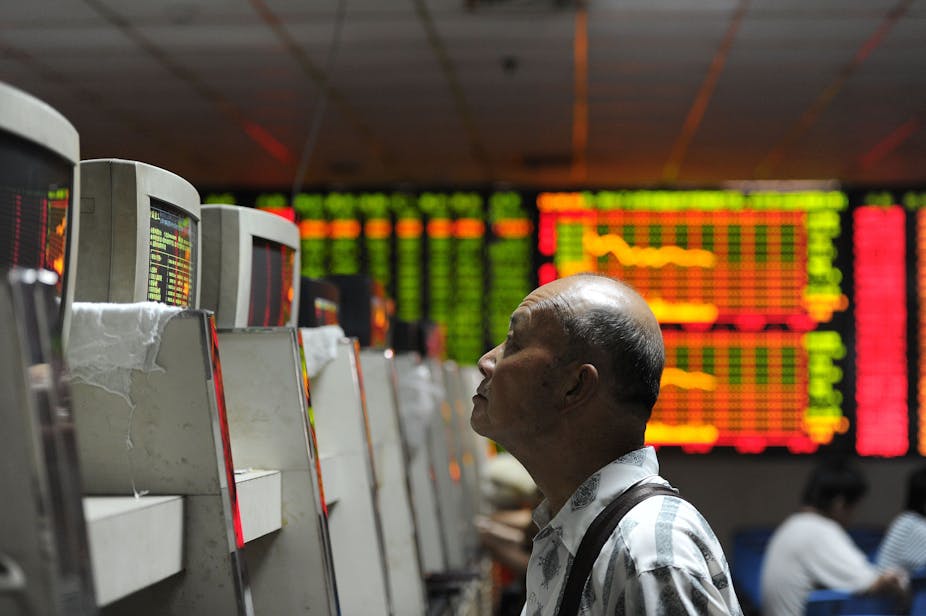People who work in business and finance are obsessed with economic data releases – GDP growth figures, unemployment rates, trade statistics, and so on.
Business journalists, investors, financial analysts, traders and bankers subsist on the drip-feed of data that flows each week from the Australian Bureau of Statistics (ABS), the Reserve Bank (RBA), and research institutes.
All this information affects the confidence and behaviour of these players, and by extension, has serious implications for the direction of the economy – so there’s good reason to take it all seriously.
But how much should we rely on data, given that much of it is revised later?
Last week’s GDP data release from the ABS offers a case in point.
Treasurer Wayne Swan complained that some in the media were wailing about an impending recession when the previous quarter’s flood-affected figures were published.
The June quarter figures show a bounce-back of 1.2%, and some of the pundits now claim that the result is so strong that a boom is on the way and the RBA will raise interest rates.
I don’t see what any of the fuss is about. Growth contracted in the floods, and then output returned to normal afterwards.
A boost to inventories may simply be replenishing the stocks run down during and following these floods.
When you are sick in bed, your output falls. When you get better and go back to work, you get a strong growth pick-up simply from the low base.
It’s a cliche that one shouldn’t read too much into a single GDP figure – revisions are frequent. The March quarter decline was itself reduced.
Treasury recently published a paper about the perils of forecasting in tumultuous times.
Take a look at this chart from the report – particularly the differences between first published outcomes and the later ones.

Apparently floods can be tricky for forecasters too.
We don’t need to go through the old commentator’s songbook about how spikes in food prices may cause the RBA to raise interest rates to keep inflation on target. By now we know that the RBA ignores these sporadically volatile components of the CPI.
Screen jockeys, as day traders are known in the industry, gasp at the latest statistical releases and draw all kinds of wild conclusions. These pros (of whom I am not one) try to think a bit quicker than the herd and make some money at their expense.
Those who leapt to the premature conclusion that interest rates would rise over the past few months, on the back of strong data, have already paid too much for something or sold something for too little. Only luck can save them now.
Sober decision-makers striving to take a longer view (of whom, again, I am not one) form judgements based on a reading of wider set of indicators.
Take a look at capacity utilisation in the RBA’s Chart Pack, which is steady but maybe still a bit low.
This would corroborate the story that we are around the output figure consistent with stable underlying inflation. Remembering that the floods would have destroyed some capacity to produce, the low-ish tally of four quarters of growth may be consistent with demand and supply growing apace.
Another trap is to put too much weight on news stories.
For example, job losses in manufacturing are pretty normal. The manufacturing sector has declined steadily by a third over the last 35 years. It’s not easy to disentangle cyclical fluctuations from remorseless trends.
It also helps to predict interest rates changes if you try to see the world through the eyes of the central bankers. Our RBA officials frequently give revealing hints in their speeches.
One very interesting hint is the commonly expressed idea that the RBA does more than set interest rates in the light of keeping inflation within the band. If they regard interest rates as abnormally low (this supposedly has damaging longer-term effects on saving and investment), they’ll inch them up anyway if the chance arises.
Of course the problem now is deciding what can be regarded as “normal” in such abnormal times, especially in the light of such low interest rates elsewhere.
All of this makes the process of interpreting data rather fraught. Breaking from the pack is even more difficult – as John Maynard Keynes said, “… it is better for reputation to fail conventionally than to succeed unconventionally.”
Nobody loves someone who tells everybody they are all wrong, especially when this person is proved correct by events.
So we continue to sing in chorus. It’s also true that errors are forgotten in the cacophony of chatter. Nobody will remember if any of us armchair analysts is right or wrong.

